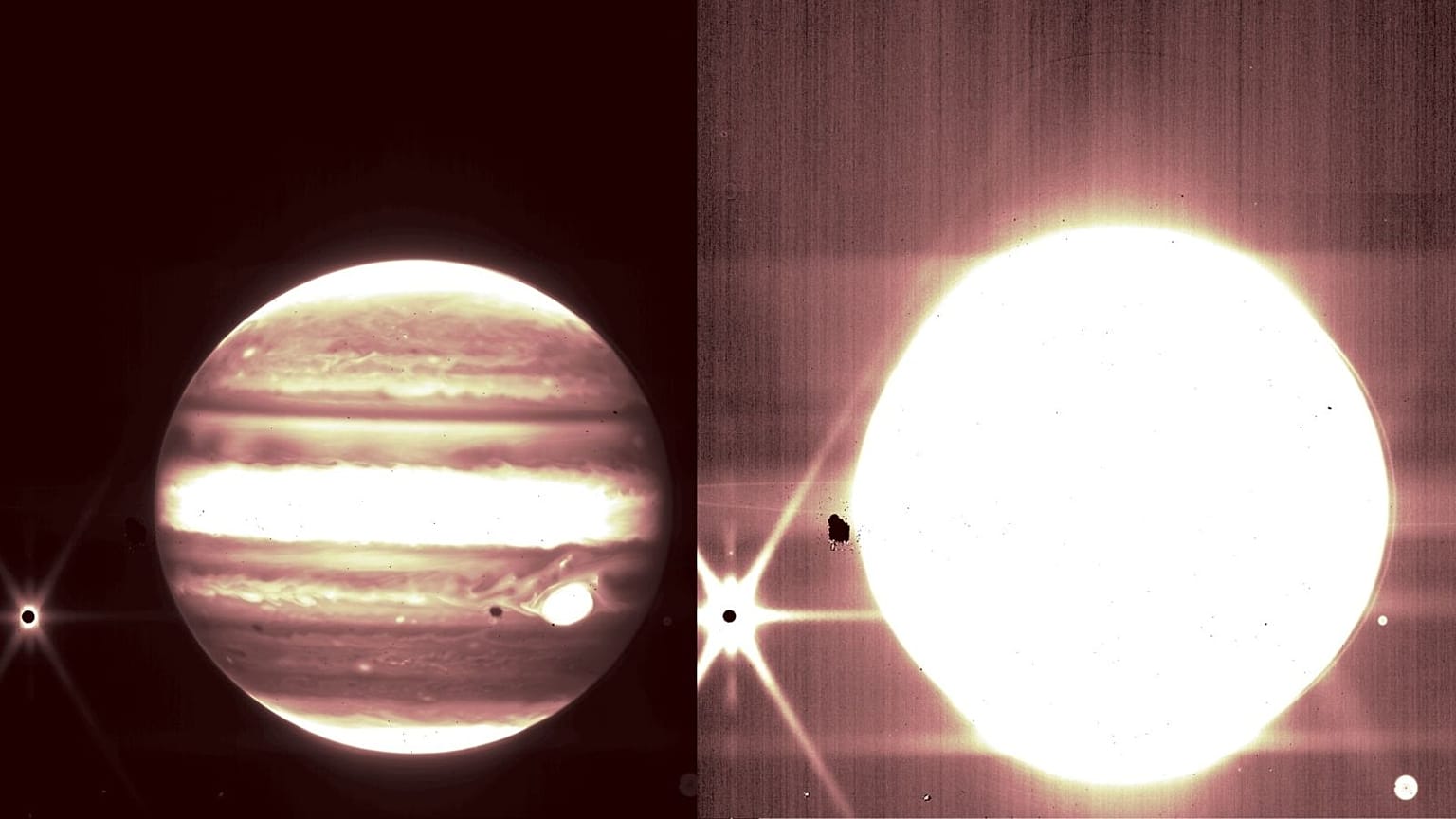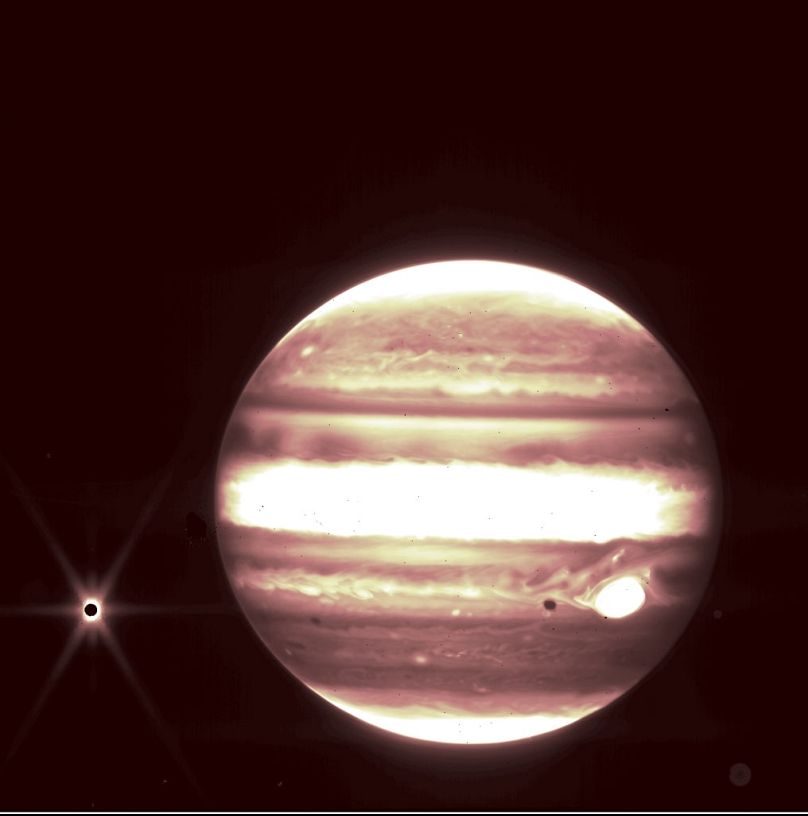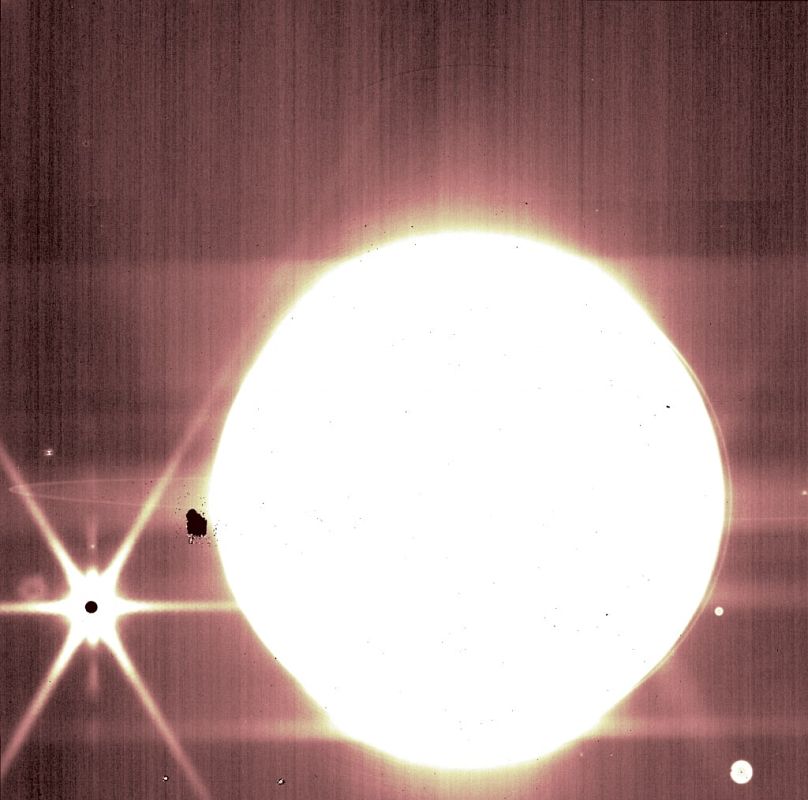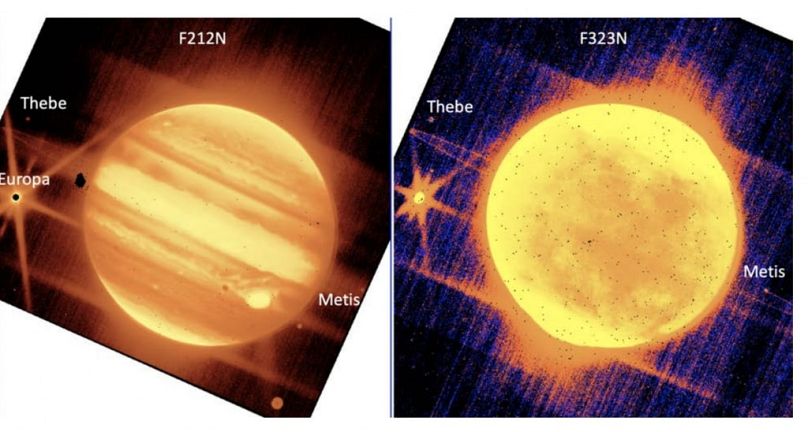Fans of the biggest planet in our solar system will be dazzled by the latest images taken by the Webb Telescope: Jupiter with its rings and three of its moons are shown in unprecedented detail.
Astronomers are calling it the “dawn of a new era”: NASA revealed this week the first full-colour images and data from the James Webb Space Telescope, the world’s largest, most powerful and most complex space science telescope ever built.
The first round of images gave us a breathtaking view of the cosmos, with the deepest and sharpest infrared images of the distant universe to date.
Now new photographs that were taken during the calibration tests of the space telescope have been released, giving us an unprecedented view of Jupiter, the fifth planet from the Sun and the largest in the solar system.
Fans of Jupiter will identify some familiar features of the gas giant – its rings, three of its moons: Europa, Thebe and Metis, as well as the Great Red Spot, “a storm big enough to swallow the Earth,” in NASA’s words.
The iconic spot appears white in this image because of the way Webb’s infrared image was processed.
“Combined with the deep field images released the other day, these images of Jupiter demonstrate the full grasp of what Webb can observe, from the faintest, most distant observable galaxies to planets in our own cosmic backyard that you can see with the naked eye from your actual backyard,” Bryan Holler, a scientist at the Space Telescope Science Institute in Baltimore, said in a statement.
The images were taken with two different filters that highlight separate wavelengths of light.
Part of the test was to ensure that the telescope could track objects that move quickly through the solar system, such as Jupiter.
The test also proved Webb can photograph details such as moons and rings around a planet as bright as Jupiter.
“I couldn’t believe that we saw everything so clearly, and how bright they were,” said Stefanie Milam, Webb’s deputy project scientist for planetary science.
Jupiter’s rings especially stand out in the NIRcam long-wavelength filter image.
The future of space discovery
The Webb Telescope is the result of the combined efforts of about 20,000 engineers, astronomers and technicians over 30 years.
The multibillion-dollar project – in partnership between NASA, the European Space Agency and the Canadian Space Agency – seeks to solve some of humanity’s biggest mysteries, such as the structures and origins of our universe and our place in it.
Astronomers hope it will revolutionise our understanding of the universe as the Hubble telescope did.





















